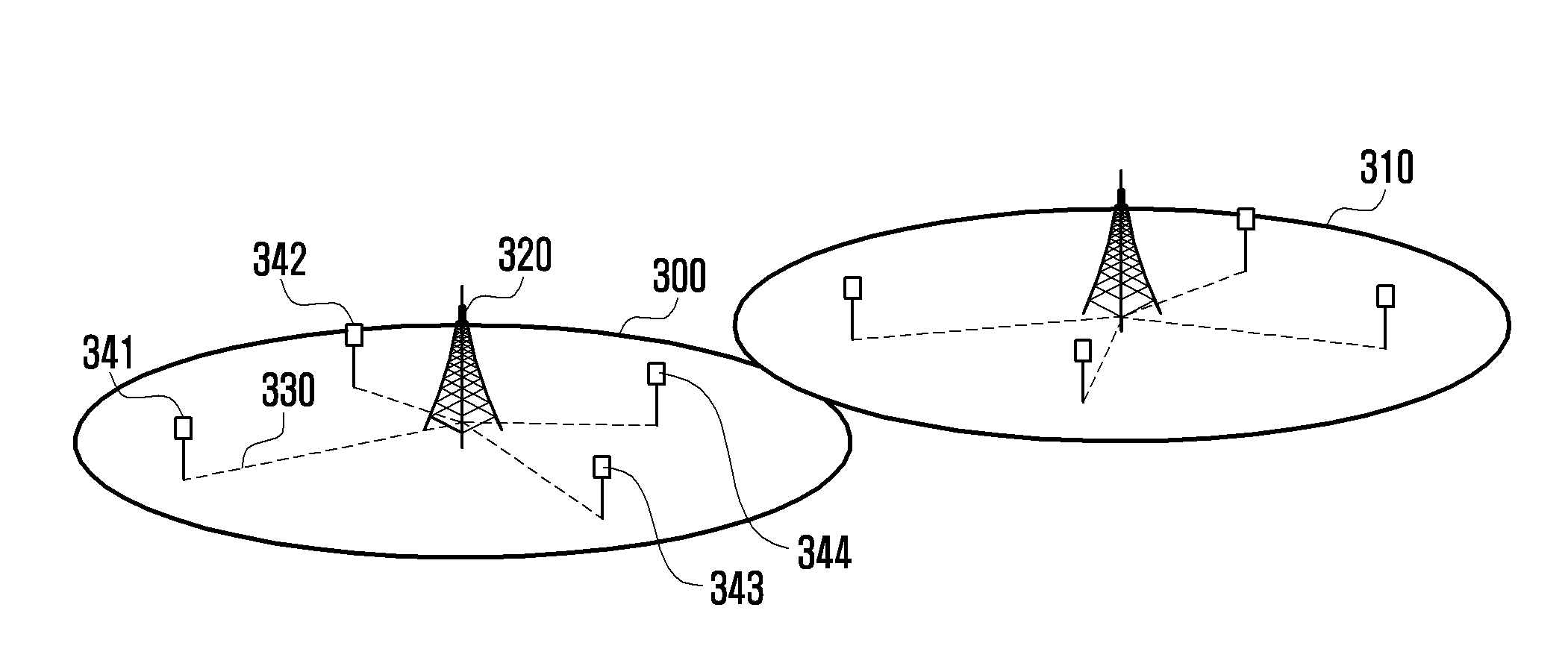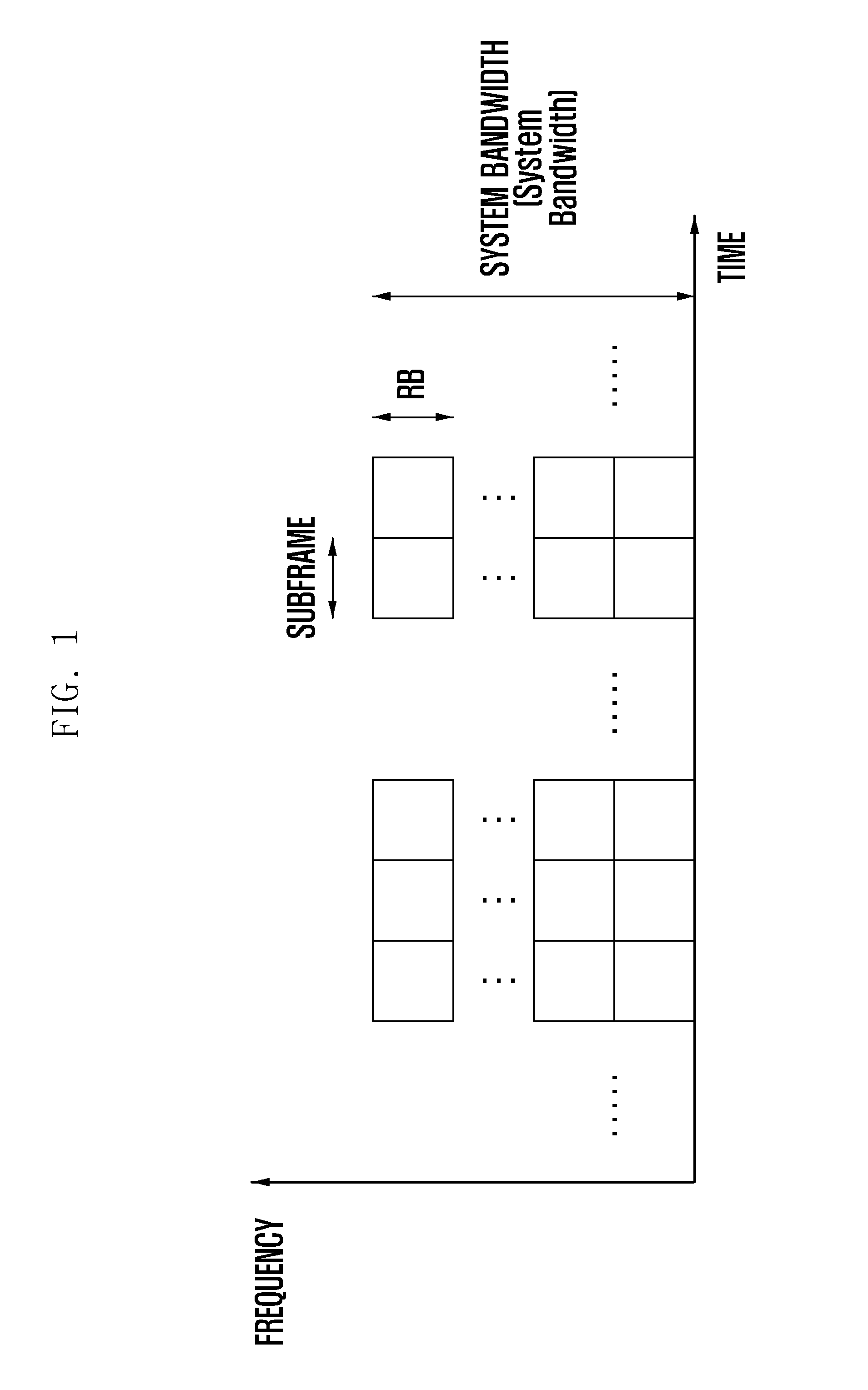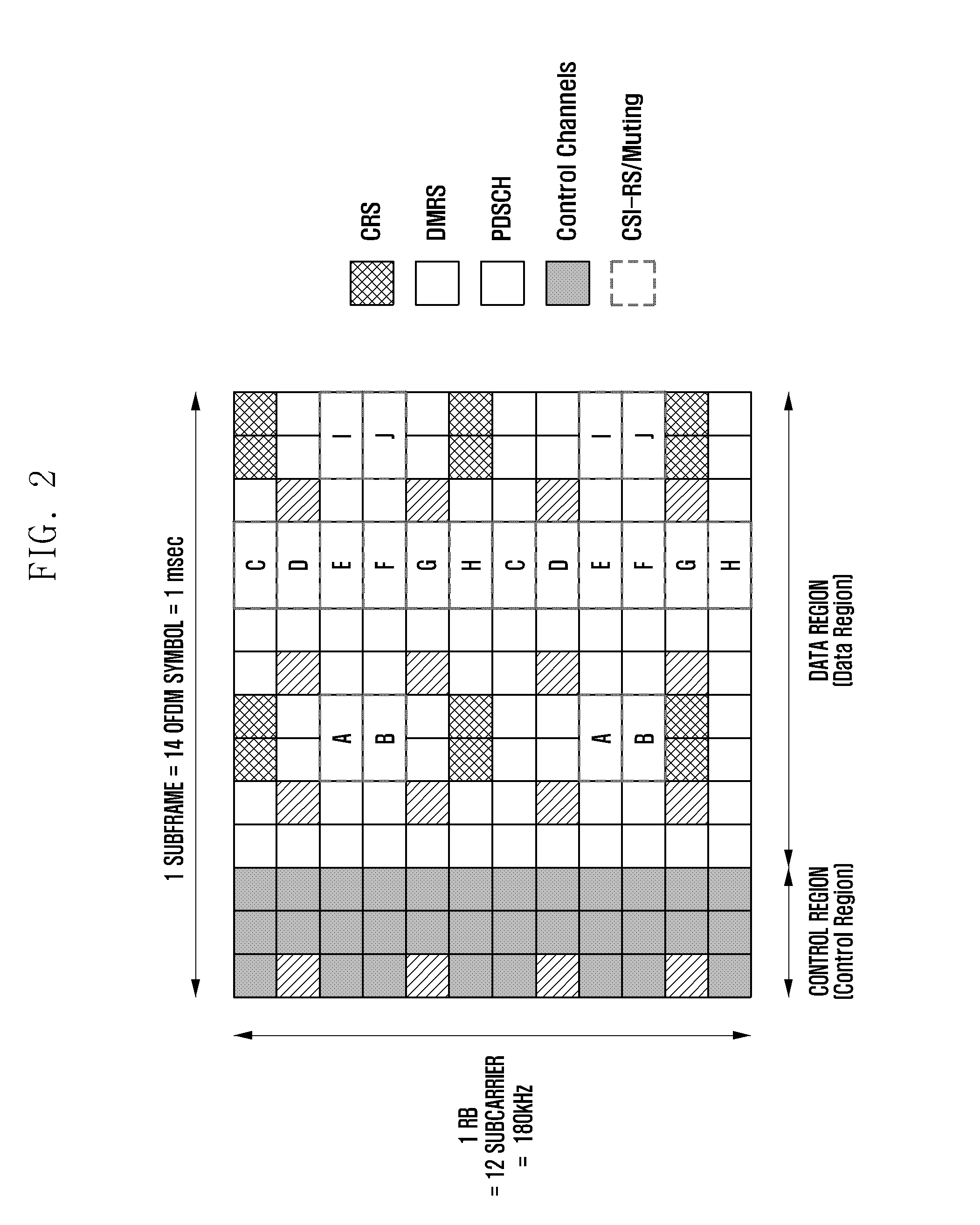Interference measurement method and apparatus for use in distributed antenna system
a technology of interference measurement and antenna system, applied in the direction of frequency-division multiplex, transmission monitoring, site diversity, etc., can solve the problems of not being able to apply unique scrambling crss, unable to measure the intra-cell interference of other antenna groups of the same cell, and unable to apply one pattern partially
- Summary
- Abstract
- Description
- Claims
- Application Information
AI Technical Summary
Benefits of technology
Problems solved by technology
Method used
Image
Examples
embodiment 1
[0101]If the conditions 1 and 2 are fulfilled, the UE skips interference measurement at the corresponding subframe. That is, if the IMR-based interference measurement and PDSCH reception occur at the same subframe, the UE generates the channel state information based on the previously measured interference without interference measurement at the corresponding subframe. At this time, the most recently measured interference may be used.
embodiment 2
[0102]If the conditions 1 and 2 are fulfilled, the UE skips interference measurement in the RBs carrying PDSCH addressed to itself in the corresponding subframe but measures interference in the RBs carrying no PDSCH to generate the channel state information. Such an example is shown in FIG. 11.
[0103]FIG. 11 is a diagram illustrating a principle of interference measurement method according to an embodiment of the present disclosure. In the embodiment, the interference measurement is skipped in the RB carrying PDSCH and performed in the RBs carrying no PDSCH.
[0104]Referring to FIG. 11, the UE receives PDSCH on the subband 0 but not on subband 1. Accordingly, the UE skips interference measurement on the subband 0 but performs interference measurement on the subband 1. At this time, the channel state information on the subband 0 is generated using the interference measured at the previous subframe on the subband 0 or the interference measured at the current subframe on the subframe 1. I...
embodiment 3
[0105]If the conditions 1 and 2 are fulfilled, the UE may process the interference measured in the RB carrying PDSCH addressed to the UE and the interference measured in the RB carrying no PDSCH at the corresponding subframe separately. As described above, if the UE measures the PDSCH as interference, excessive interference may be measured. By taking notice of this, the UE may compensate the interference measured in the RB carrying PDSCH to drop down at a predetermined rate. That is, the UE applies a constant Interference Adjustment Factor (IAF) to the interference measured in the RB carrying PDSCH. The IAF is multiplied to the interference measured in the RB carrying PDSCH to adjust the interference. The IAF may be notified to the UE through higher layer signaling or determined according to other control information configured at the UE. One approach for the UE to determine IAF according to other control information is to differentiate the value of IAF depending on the rank of PDSC...
PUM
 Login to View More
Login to View More Abstract
Description
Claims
Application Information
 Login to View More
Login to View More - R&D
- Intellectual Property
- Life Sciences
- Materials
- Tech Scout
- Unparalleled Data Quality
- Higher Quality Content
- 60% Fewer Hallucinations
Browse by: Latest US Patents, China's latest patents, Technical Efficacy Thesaurus, Application Domain, Technology Topic, Popular Technical Reports.
© 2025 PatSnap. All rights reserved.Legal|Privacy policy|Modern Slavery Act Transparency Statement|Sitemap|About US| Contact US: help@patsnap.com



